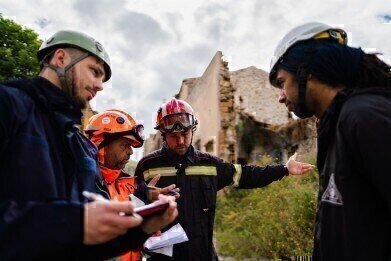Air Clean Up
Can Built Environments Achieve Zero Pollution?
Apr 21 2021
The UK government has earmarked a target of 2050 for reaching net zero in its carbon emissions. In order to achieve that objective, it will take a concerted effort across a variety of industries and fields, including built environments and infrastructure.
In a bid to identify ways in which the country that make inroads into its current carbon footprint, Imperial College London has published a report outlining six areas of research that will become crucial to the success of the endeavour. The report was launched last month to coincide with the tenth anniversary of the Centre for Systems Engineering and Innovation (CSEI), whose vision over the next decade it aims to elucidate.
Concrete suggestions
The main crux of the report concerns itself with finding ways for built environments to work in harmony with their natural surroundings, thus creating a mutually beneficial relationship for both. Civil engineers will be integral to achieving this equilibrium, a point which is repeatedly highlighted throughout the paper. As well as outlining broad ambitions and approaches that Britain must take if it is to attain its goals, the report also comes up with several concrete suggestions on how individuals and corporations can follow the lead of scientists to slow climate change by reducing emissions to net zero.
For example, it is recommended that water companies adjust their intake of water from rivers and lakes during times of excessive rainfall, thus maintaining river levels and reducing pollution concentrations in these bodies of water. To boost water quality by a comparable amount through infrastructural improvements would cost an estimated £200 million, demonstrating the value of such simple but effective measures.
Six pillars of research
Not content with simply highlighting initiatives that can be put in place now, the report also identifies six key areas of research which could potentially expand our capabilities to reduce carbon emissions even further. These are:
- Infrastructure. Developing eco-friendly infrastructure to better manage population dispersal and limit pollution can beneficially impact the natural world.
- Digital engineering. Harnessing the power of Big Data to make incremental changes to infrastructural operations can optimise emissions in sectors such as transport, power and food.
- Construction. Introducing assembly lines, digital technologies and industrialised techniques could help to safeguard air quality at construction and demolition sites.
- System resilience. As systems evolve, they necessarily become more complex, thus jeopardising their resilience. As such, the subject must be studied further to ensure their adaptability.
- Material lifecycles. Industries such as construction must evaluate the entire lifecycle of the materials used in their operations, such as concrete, to minimise their emissions throughout.
- Integration. Understanding how apparently unconnected elements in a built environment relate to one another is important to adopting a holistic approach.
Events
WEATHER • CLIMATE • WATER / EARTH OBSERVATIONS / GREEN ECONOMY
Oct 29 2024 St. Petersburg, Russia
Oct 30 2024 Hong Kong
Nov 05 2024 Toronto, Canada
Nov 06 2024 Ho Chi Minh City, Vietnam
Nov 12 2024 Valencia, Spain













